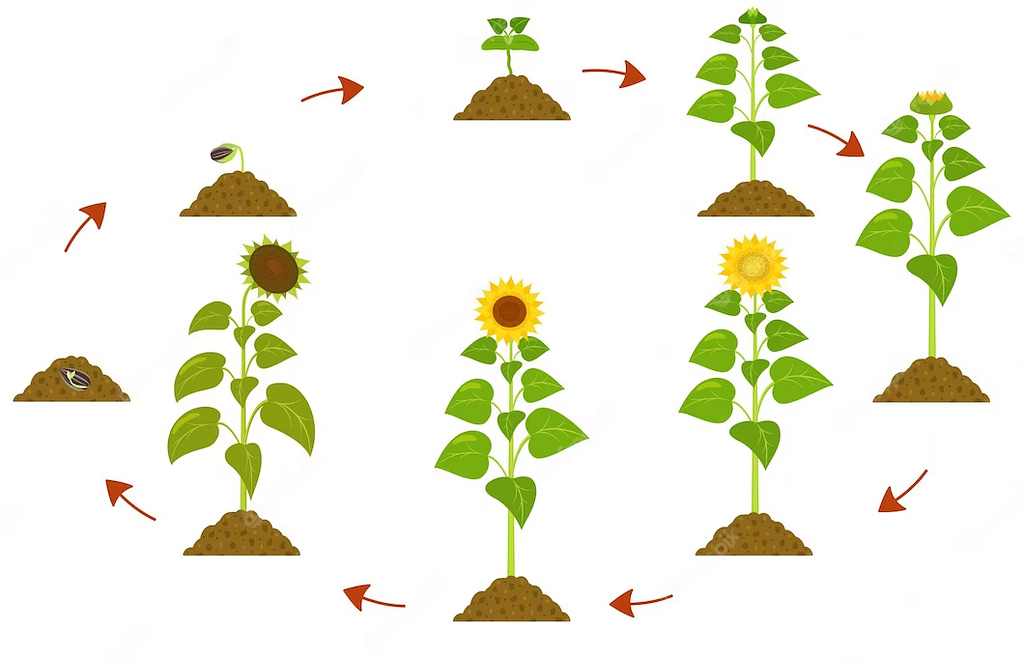24 Solar Terms
The inhabitants of ancient China divided the year into equal segments based on the Earth’s movements around the sun. This way of perceiving and structuring the solar year, subsequent changes in nature over the seasons and their impact on different aspects of people’s lives are closely linked to ancestral knowledge.
Using the calendar, people in China were able to understand their environment and apply this knowledge to agriculture, traditions and cultural identity. Since then, solar terms are playing an important role and have a big influence on people’s basic needs. To be in harmony with nature, it is necessary to adapt to routines and customs, as dictated by changes in the environment, to achieve profit and well-being.
There is a Chinese saying: “Everything is born in spring, grows in summer, is harvested in autumn, hides in winter and people should follow it”.
FLOWER CYCLE

Plant in the spring
Bloom in the summer
Die in the autumn (harvest)
Wait till winter passes
Next spring …
Human CYCLE

Start doing more exercise in the spring
Work hard in the field during the summer
Slow down and eat more in the autumn to prepare for the winter
Rest and sleep more in the winter – Next spring …
List of the 24 Solar Terms in 2023
| Solar Terms | Chinese | Month and Date | Remarks |
| Start of Spring | lì chūn 立春 | Feb 4th | A dubiously premature name, as it’s not the beginning of spring in most of China; only in the extreme south. |
| Rain Water | yǔ shuǐ 雨水 | Feb 19th | There is an increase of rainfall from then on. |
| Awakening of Insects | jīng zhé 惊蛰 | Mar 6th | Thunder begins and hibernating insects wake up. |
| Vernal Equinox | chūn fēn 春分 | Mar 21st | With an equal length of day and night. |
| Clear and Bright | qīng míng 清明 | Apr 5th | It is clear and bright (when it’s not raining), and the weather becomes noticeably warmer. A misnomer, particularly in southern China. |
| Grain Rain | gǔ yǔ 谷雨 | Apr 20th | The early crops show their shoots. |
| Start of Summer | lì xià 立夏 | May 6th | The beginning of summer (in southern China). |
| Small Full (Grain) | xiǎo mǎn 小满 | May 21st | The seeds of summer crops begin to become plump, but are not yet ripe. |
| Grain in Ear | máng zhǒng 芒种 | Jun 6th | The wheat becomes ripe; and the summer planting starts (in southern China). |
| Summer Solstice | xià zhì 夏至 | Jun 21st | The daytime is the longest and the nighttime is the shortest of the year. |
| Minor Heat | xiǎo shǔ 小暑 | Jul 7th | The beginning of the hottest period. |
| Major Heat | dà shǔ 大暑 | Jul 23rd | It is the time of year when the duration of the sunshine is the longest, the average temperature is the highest, the rainfall is the greatest, and the thunderstorms are the most frequent (in some parts of northern China). |
| Start of Autumn | lì qiū 立秋 | Aug 8th | An anomaly: nowhere is this true. Like the “start of spring” it is about a month premature. |
| Limit of Heat | chù shǔ 处暑 | Aug 23rd | The end of the hot summer. |
| White Dew | bái lù 白露 | Sep 8th | The transition from summer to autumn. The temperature drops sharply, and the autumn rains come. |
| Autumnal Equinox | qiū fēn 秋分 | Sep 23rd | With an equal length of day and night. |
| Cold Dew | hán lù 寒露 | Oct 8th | The weather becomes cold enough to reach dew point, but not cold enough to reach frost point. |
| Frost Descent | shuāng jiàng 霜降 | Oct 24rd | The weather becomes cold and frost begins to form (in North China). |
| Start of Winter | lì dōng 立冬 | Nov 8th | True of northern China, but winter comes later in the south. |
| Minor Snow | xiǎo xuě 小雪 | Nov 22nd | Snow begins to fall, the weather becomes cold. |
| Major Snow | dà xuě 大雪 | Dec 7th | It snows heavily for the first time in the year (in northern China). |
| Winter Solstice | dōng zhì 冬至 | Dec 22nd | The daytime is the shortest and the nighttime is the longest of the year. |
| Minor Cold | xiǎo hán 小寒 | Jan 5th, 2024 | The weather rapidly reaches its coldest. |
| Major Cold | dà hán 大寒 | Jan 20th, 2024 | ‘Major Cold’ It is the coldest time of the year. |


